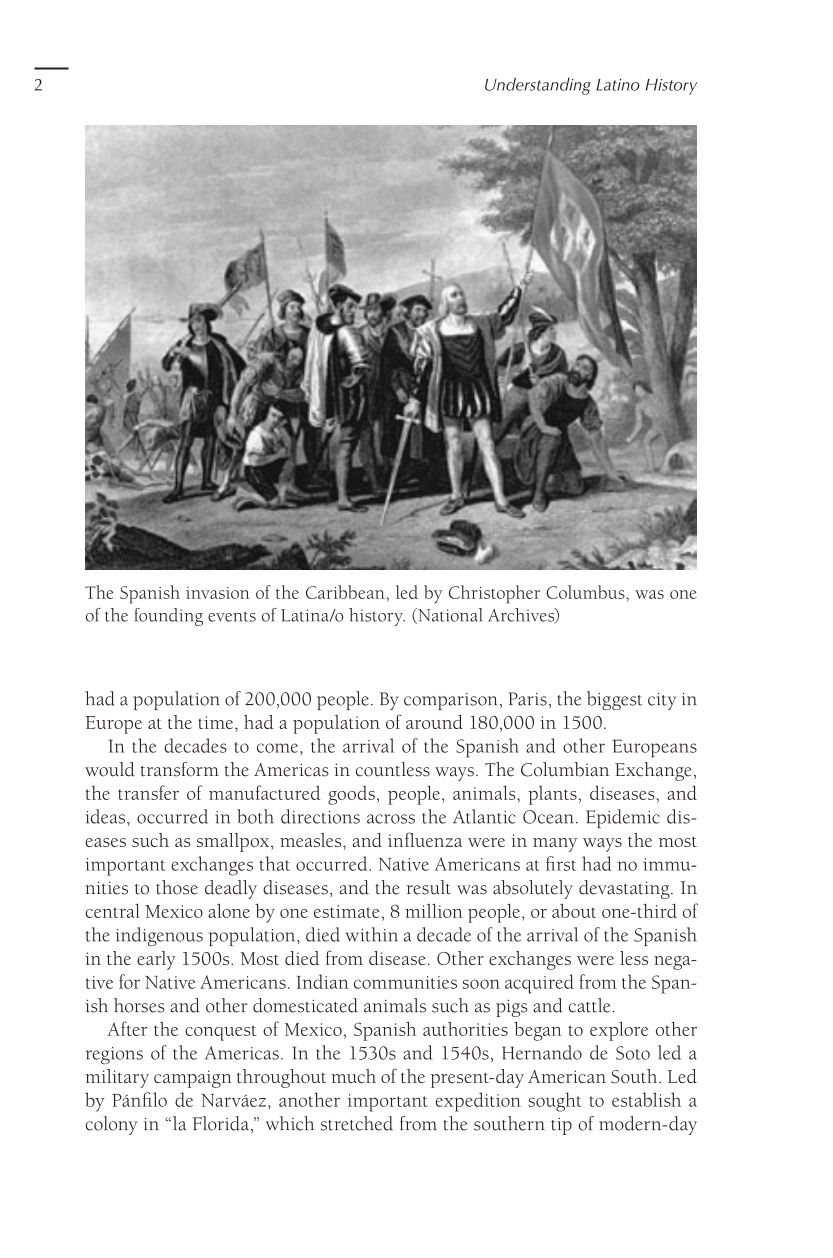2 Understanding Latino History
had a population of 200,000 people. By comparison, Paris, the biggest city in
Europe at the time, had a population of around 180,000 in 1500.
In the decades to come, the arrival of the Spanish and other Europeans
would transform the Americas in countless ways. The Columbian Exchange,
the transfer of manufactured goods, people, animals, plants, diseases, and
ideas, occurred in both directions across the Atlantic Ocean. Epidemic dis-
eases such as smallpox, measles, and influenza were in many ways the most
important exchanges that occurred. Native Americans at first had no immu-
nities to those deadly diseases, and the result was absolutely devastating. In
central Mexico alone by one estimate, 8 million people, or about one-third of
the indigenous population, died within a decade of the arrival of the Spanish
in the early 1500s. Most died from disease. Other exchanges were less nega-
tive for Native Americans. Indian communities soon acquired from the Span-
ish horses and other domesticated animals such as pigs and cattle.
After the conquest of Mexico, Spanish authorities began to explore other
regions of the Americas. In the 1530s and 1540s, Hernando de Soto led a
military campaign throughout much of the present-day American South. Led
by Pánfilo de Narváez, another important expedition sought to establish a
colony in “la Florida,” which stretched from the southern tip of modern-day
The Spanish invasion of the Caribbean, led by Christopher Columbus, was one
of the founding events of Latina/o history. (National Archives)






































































































































































































































































































































